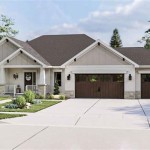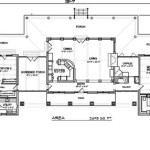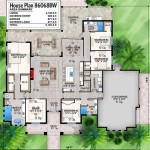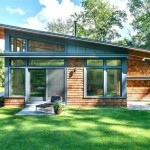Ranch Modular Home Floor Plans: A Comprehensive Guide
Ranch modular home floor plans represent a popular choice for homeowners seeking single-story living with an emphasis on accessibility, open space, and a streamlined aesthetic. These homes, built using modular construction techniques, offer a blend of affordability, speed of construction, and customizable design options, making them an attractive alternative to traditional stick-built ranch-style homes. Understanding the nuances of ranch modular floor plans is crucial for anyone considering this type of housing.
Modular construction involves creating home sections, or modules, in a controlled factory environment. These modules are then transported to the building site and assembled on a prepared foundation. This process offers several advantages, including reduced construction time, minimized waste, and enhanced quality control due to the precision of factory assembly. Ranch modular homes leverage these benefits while adhering to the characteristic design features of ranch-style architecture, such as a low-pitched roofline, large windows, and an attached garage.
Key Characteristics of Ranch Modular Home Floor Plans
Ranch modular homes, like their stick-built counterparts, are defined by several key characteristics that contribute to their appeal. Understanding these features helps in evaluating whether this style aligns with individual needs and preferences. Some prominent characteristics include single-story layouts, open floor plans, and adaptable living spaces.
The most defining feature is the single-story layout. This eliminates the need for stairs, making ranch homes ideal for individuals with mobility limitations, families with young children, and those planning to age in place. The absence of stairs also simplifies maintenance and cleaning. Ranch-style homes typically spread horizontally across a property, offering a substantial footprint on a single level. This contrasts with two-story or multi-level homes, which maximize vertical space.
Open floor plans are another hallmark of ranch modular homes. The design typically incorporates a large, interconnected living area that combines the living room, dining area, and kitchen into a single, unified space. This promotes a sense of spaciousness and facilitates interaction among family members. The open layout also allows for ample natural light penetration, contributing to a brighter and more inviting interior. Within the open floor plan, there is often strategic zoning to define different functional areas visually, such as using furniture placement or subtle changes in flooring.
Adaptable living spaces are increasingly important. Many ranch modular home floor plans include options for flexible rooms that can be used as home offices, guest bedrooms, or hobby areas. This adaptability caters to the changing needs of homeowners over time. Finished basements can also significantly increase square footage, providing additional living space for recreation, storage, or even a separate in-law suite. The adaptability also extends to exterior features, with options for patios, decks, and covered porches that enhance outdoor living.
Advantages of Choosing Modular Construction for Ranch Homes
Beyond the inherent appeal of the ranch-style design, opting for modular construction offers numerous distinct advantages. These benefits span areas such as construction speed, cost-effectiveness, customization options, and sustainability considerations.
Faster construction timelines are a significant advantage. Modular homes are built in a climate-controlled factory environment while the foundation is being prepared on the building site. This parallel construction process significantly reduces the overall construction time compared to traditional stick-built homes. Weather delays, which can significantly impact stick-built construction schedules, are minimized in the factory setting. The streamlined process also reduces the risk of material theft and vandalism, further contributing to faster project completion. The reduced construction time translates to quicker occupancy and reduced carrying costs, such as interim housing expenses.
Cost-effectiveness is another compelling benefit. Modular construction often results in lower overall construction costs due to economies of scale in the factory setting, reduced material waste, and shorter construction timelines. Modular manufacturers purchase building materials in bulk, securing lower prices than individual contractors. The precise engineering and construction processes minimize material waste, further contributing to cost savings. Labor costs are also typically lower due to the efficiency of the factory assembly line. While the upfront cost of a modular home may appear comparable to a stick-built home, the reduced construction time and minimized waste often result in significant long-term savings.
Customization options abound. Despite being built in a factory, modular homes offer a high degree of customization. Homebuyers can choose from a wide range of floor plans, finishes, and features to personalize their home to their specific needs and preferences. Modular manufacturers often work with architects and designers to develop custom floor plans that meet unique requirements. Interior finishes can be selected from a variety of options, including different types of flooring, cabinetry, countertops, and fixtures. Exterior features, such as siding, roofing, and window styles, can also be customized to achieve a desired aesthetic. The degree of customization allows homeowners to create a unique and personalized ranch-style home without the constraints often associated with prefabricated housing.
Sustainability considerations are increasingly important. Modular construction can be a more sustainable building method compared to traditional stick-built construction. The controlled factory environment reduces material waste and allows for efficient resource management. Modular manufacturers often incorporate sustainable building materials and practices into their construction processes, such as using recycled materials and energy-efficient appliances. The precise engineering and construction techniques minimize air leakage, resulting in improved energy efficiency and reduced heating and cooling costs. The shorter construction timelines also reduce the environmental impact of the building process. Choosing a modular home can be a more environmentally responsible option for homeowners seeking to reduce their carbon footprint.
Factors to Consider When Choosing a Ranch Modular Home Floor Plan
Selecting the right ranch modular home floor plan involves careful consideration of various factors, including lifestyle needs, budget constraints, site considerations, and local building codes. Addressing these aspects proactively will help ensure a successful and satisfying home-building experience.
Lifestyle needs should be a primary driver. Consider the number of bedrooms and bathrooms required to accommodate the household. Assess the need for formal living and dining areas versus a more casual, open floor plan. Evaluate the importance of features such as a home office, a mudroom, or a large kitchen island. Think about future needs, such as aging in place or accommodating growing children. A thorough assessment of lifestyle needs will help narrow down the options and identify floor plans that best align with individual requirements. For example, a family with young children might prioritize a floor plan with a large, open living area where they can easily supervise their children while they play. An individual who works from home might prioritize a floor plan with a dedicated home office space.
Budget constraints must be carefully considered. Determine a realistic budget for the entire project, including the cost of the modular home, site preparation, foundation construction, utility connections, and landscaping. Research the pricing of different modular home manufacturers and floor plans to get a sense of the available options within the budget. Consider financing options, such as mortgages and construction loans. Be prepared to make compromises on certain features or finishes if necessary to stay within budget. A well-defined budget will help avoid overspending and ensure a financially sound home-building experience. It is important to factor in potential unforeseen expenses, such as unexpected site conditions or changes in building codes.
Site considerations play a crucial role. Evaluate the size and shape of the building lot to determine the maximum footprint of the home. Consider the topography of the site and any potential challenges, such as sloping terrain or drainage issues. Assess the soil conditions to ensure a stable foundation. Evaluate the access to utilities, such as water, sewer, and electricity. Consider the orientation of the home to maximize natural light and energy efficiency. A thorough site assessment will help identify any potential challenges or limitations that may impact the choice of floor plan. For example, a narrow lot might require a more compact floor plan, while a sloping site might necessitate a specific type of foundation.
Local building codes must be adhered to strictly. Research the local building codes and regulations to ensure that the chosen floor plan meets all necessary requirements. This includes regulations regarding setbacks, building height, fire safety, and energy efficiency. Work with a qualified architect or engineer to ensure that the home complies with all applicable codes. Obtain all necessary permits before beginning construction. Failure to comply with local building codes can result in costly delays and fines. Understanding local regulations is crucial for a smooth and compliant home-building process. This includes aspects like egress windows in bedrooms, smoke detector placement, and insulation requirements.

The Ranch Style Modular Home That Is Ideal For Starting Families Lincolnton Nc

The Pennflex Ii Ranch Modular Home Series Standard As Style Pennwest Homes Model Hr170 A Custom Built By Patriot S

Pennwest Homes T Ranch Style Modular Home Floor Plans Overview Custom Built By Patriot S

Fuller Modular Homes Classic Ranch 1288 Home Floor Plan Weird Sinks Plans

Hemlock Ranch Modular Home Floor Plans Apex Homes

Sandusky One Story Stories Modular Home Floor Plan The Plans Ranch Style

1 400 Square Foot Modular Ranch Home Three Bedrooms And Two Full Bathrooms Signature Building Systems

Modular Homes Floor Plan Model 9561

Tuscany Fuller Modular Homes

6 Gorgeous Ranch Style Modular Homes Mhvillager








